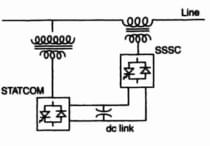 |
| Micro Grid |
1. Smart Grid Technology comprises the following_______.
a. AMI, PLM, OMS, Renewable Integration, Microgrid,
b. DR/DSM, Distribution Automation, Energy Efficient Systems
c. All of the above
d. None of the above
2. AMI means________.
a. Automated Metering Instrument
b. Alternate Metering Instrument
c. Advanced Metering Infrastructure
d. Advanced Metering Instrument
3. PLM means______.
a. Peak Load Management
b. Plant Load Management
c. Power Leakage Management
d. Plant Leakage Management
4. OMS means________.
a. Overall Maintenance System
b. Overall Management System
c. Outage Management System
d. Outage Maintenance System
5. The smart grid will help consumers manage their electricity bill.
a. True
b. False
6. Even with a smart meter, consumers still have to call the electric company when they lose power.
a. True
b. False
7. The smart grid will help the electric company minimize service disruptions.
a. True
b. False
8. The smart grid will help the electric company restore power more quickly after an outage.
a. True
b. False
9. One of the largest returns on investment pertaining to the deployment of advanced sensing and measurement technologies is the reduction of energy theft.
a. True
b. False
10. Smart Grid goals include all but the following__________.
a. Potentially reducing our carbon footprint
b. Introducing advancements and efficiencies yet to be envisioned
c. Assimilate all cultures, all categories of consumers
d. Maintaining grid affordability
11. Electric vehicles plugged into the grid could potentially help stabilize grids during peak usage times.
a. True
b. False
12. “Making the grid smarter” may be achieved by replacing traditional analog components with digital ones and incorporating the computing, IT, sensors and other equipment in electric supply system.
a. True
b. False
13. Smart meter is an important element in building the smart grid. These advanced meters
a. Measure electricity usage in real time.
b. Can send data to and from electric companies and their customers.
c. Allow companies to give consumers more information about their electricity usage, and communicate current electricity prices.
d. All of the above
14. Smart Grid technologies are aimed at improvement of
a. Only Power Transmission System
b. Only Power Distribution system
c. Both Power Transmission & Distribution System
d. Neither Power Transmission nor Power Distribution system
15. Distributed intelligence is achieved by means of Sensors and other monitoring devices in remote locations intended for long-term operation in the field.
a. True
b. False
16. Net metering allows consumers who contribute power to the grid to receive credit for at least a portion of that electricity.
a. True
b. False
17. In a Smart Grid ECO System, a normal consumer is expected to be able to turn to
a. a non-consumer
b. a careful consumer
c. a Prosumer
d. Both careful consumer and Prosumer
18. Time of use (TOU) is an energy cost reduction measure that permits consumers to operate during off-peak hours.
a. True
b. False
19. Time of day rate is the rate charged to electric utility customers based on the varying costs of delivering service at different times throughout the day.
a. True
b. False
.
20. POWERGRID has demonstrated the Smart Grid Technology capabilities in collaboration with various solution providers at
a. Bengaluru
b. Mysore
c. Puducherry
d. New Delhi







0 Comments
If you have any doubt, feel free to ask.